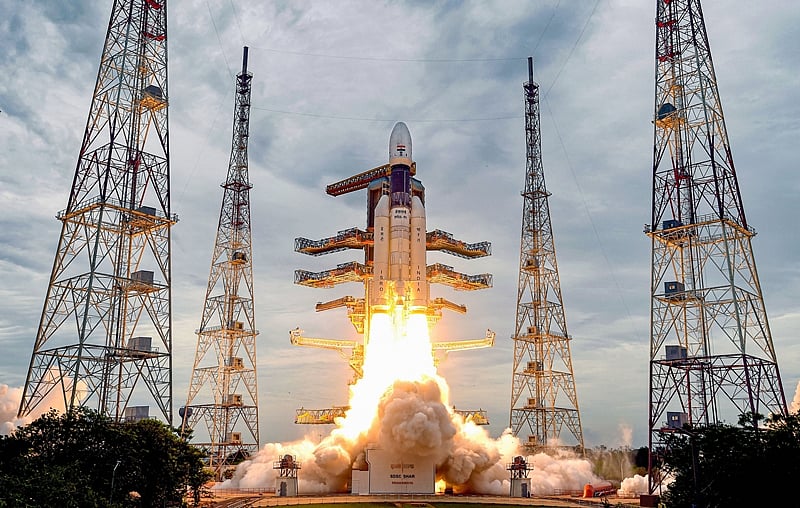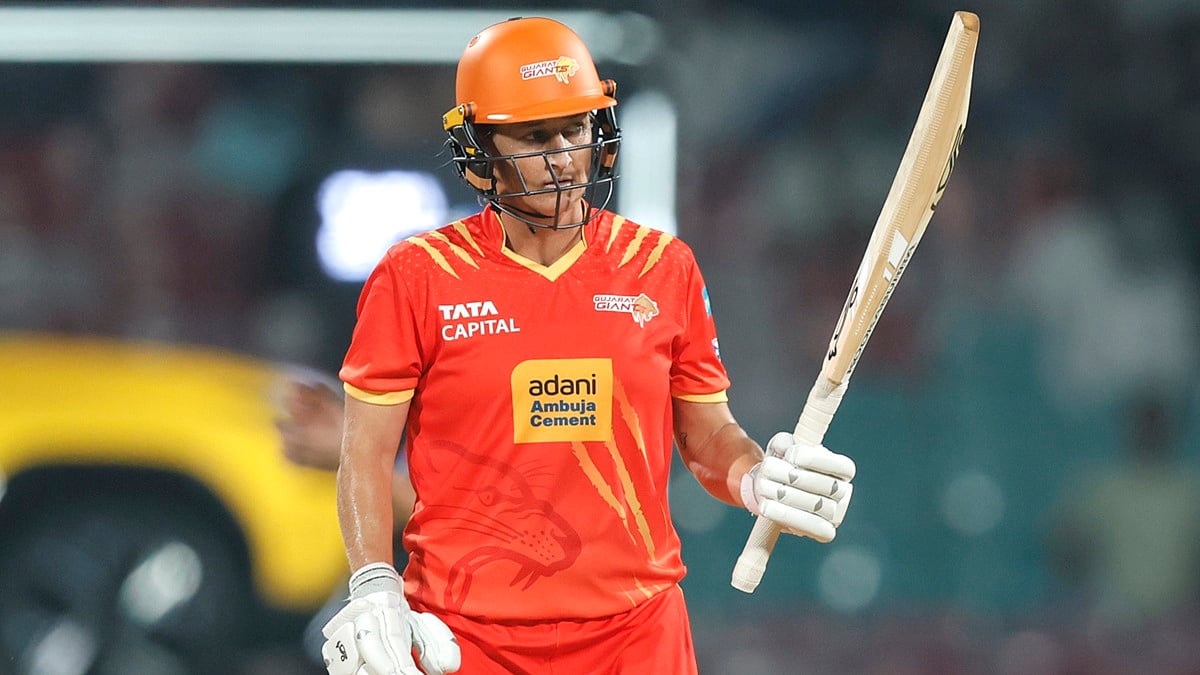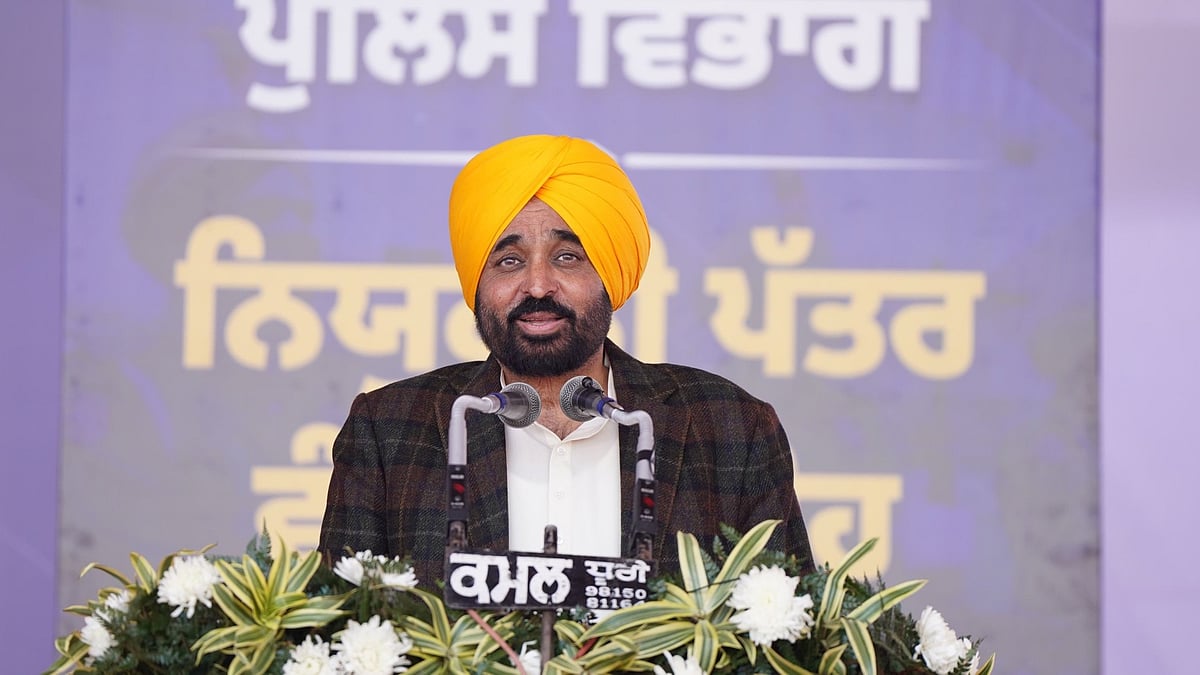Sriharikota: It was a flawless take-off for the second lunar mission as its 'Bahubali' GSLV rocket successfully put the Chandrayaan-2 into the earth’s orbit, its intended parking slot.
From here, it will be a long drawn, one-and-a-half-month journey for Chandrayaan-2, as it traverses the 384,400 km that separate Earth and its sole satellite.
There will be 15 crucial manoeuvres over the next 1.5 months. But, in the end, what matter will be 15 nail-biting minutes of terror, trying to safely land the Vikram lander on the South Pole of the moon.
The world has been waiting for this mission, Indian Space Research Organisation Chairman K. Sivan said after the blast-off. ‘‘Today is a historic day for science and technology in India,’’ he added as he congratulated the scientific fraternity which burned midnight oil for 1.5 years to realise the Chandrayaan-2 dream.
"Soon after the launch, Prime Minister Narendra Modi tweeted: "#Chandrayaan2 is unique because it will explore and perform studies on the South Pole region of lunar terrain which is not explored and sampled by any past mission. This mission will offer new knowledge about the Moon."
"Efforts such as #Chandrayaan2 will further encourage our bright youngsters towards science, top quality
research and innovation. Thanks to Chandrayaan, India's Lunar Programme will get a substantial boost. Our existing knowledge of the Moon will be significantly enhanced," Modi said in another tweet.
According to an ISRO official, Vikram will land on the moon on September 7. "Since this is the first moon landing mission of ISRO, we had built in buffer time which is being used now," an ISRO official explained.
As per the July 15 flight schedule, Chandrayaan-2's earth bound phase was 17 days and it has now been revised to 23 days as per the new schedule. On the other hand, the lunar-bound phase, which was for 28 days under the July 15 flight schedule, has come down to 13 days.
Originally Vikram was to land on the moon 54 days after the lift off but it will now do so in 48 days. The Indian space agency has named the lander in memory of country's space pioneer Vikram Sarabhai while the rover's name means wisdom in Sanskrit.
According to the ISRO, on the day of its soft landing, Vikram will separate from the Orbiter at a height of 100 km from the moon’s surface and then perform a series of complex manoeuvres. Imaging of the landing site will be done for ensuring a hiccup-free culmination of the journey.
Subsequently, the six-wheeled rover Pragyan will roll out and carry out two experiments on lunar surface for a period of one lunar day, which is equal to 14 Earth days.
The Orbiter, which will conduct eight scientific experiments, will continue its mission for a duration of one year. It will be orbiting in 100x100 km lunar orbit.
The mission also has one passive experiment from the US space agency NASA as well. The Indian space agency said the mission will also try to unravel the origins of the Moon.
Both the lander as well as the rover will have the Indian national flag painted on them, while the Ashoka Chakra will be imprinted on the rover's wheels.
The success of Chandrayaan-2 mission will make India the fourth country in the world to land a vehicle and travel on the Moon surface after the US, Russia and China.
A total number of 38 soft landing attempts have been made, so far. The success rate is 52%.
Pak has moon on flag, India flag on moon
When India’s second moon mission, Chandrayaan-2, was launched, Turbanator Harbhajan Singh couldn't desist from having a sly dig at India’s neighbours across Wagah border.
Clearly taunting Pakistan (which has a crescent on its green flag), Harbhajan posted, "Some countries have moon on their flags (*Pakistan, Turkey, Tunisia, Libya, Azerbaijan, Algeria, Malaysia, Maldives, and Mauritania).
While some countries have their flags on Moon (*USA, Russia, India, China)." Harbhajan, in his tweet, also posted emojis of the flags of the respective countries.
By VENKATACHARI JAGANNATHAN








